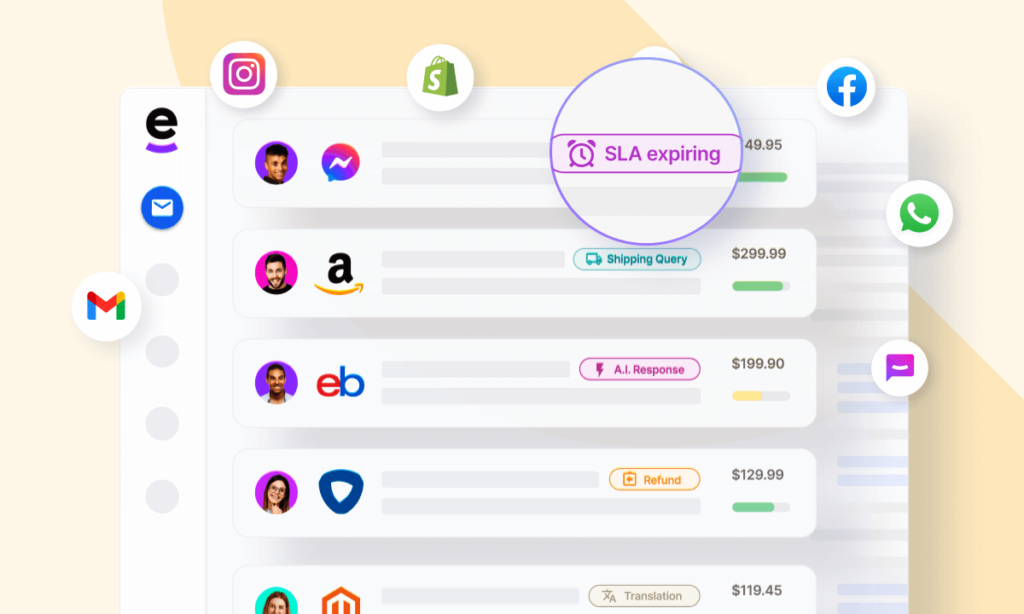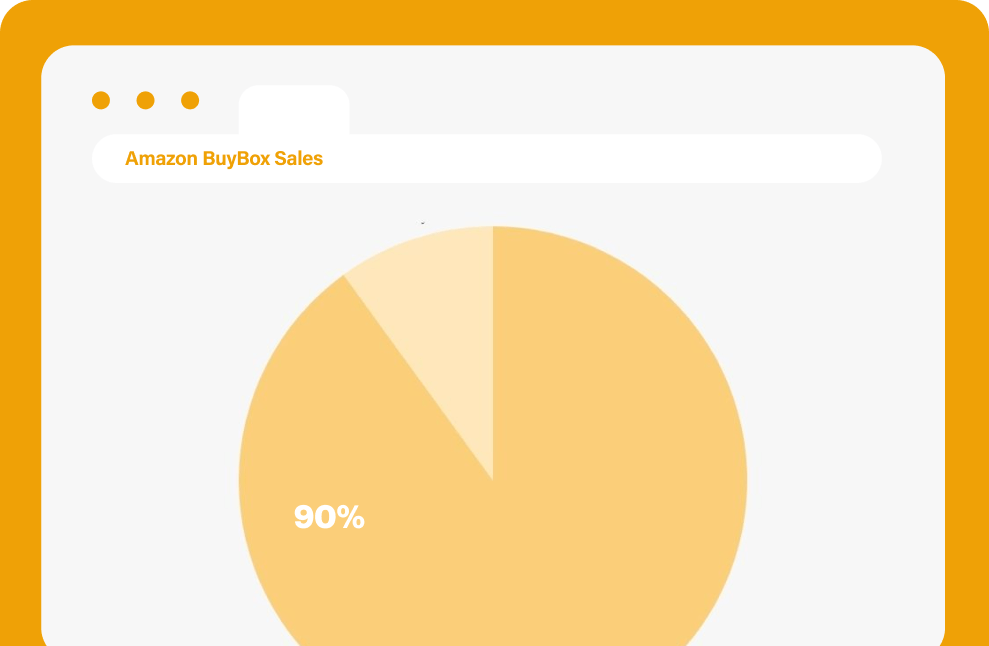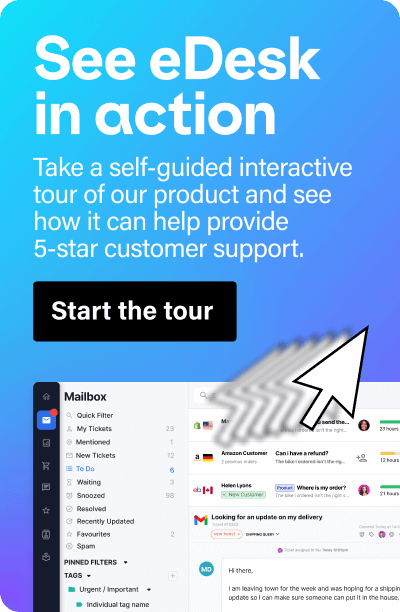This year’s Prime Day takes place on July 16th and 17th. On July 11th last year, Prime members bought 375M+ items on Amazon. That made it the largest Prime Day to date, and signs suggest 2024 will outrank even that performance.
Intense demand from customers on Prime Day is a welcome phenomenon for sellers, but it’s not always as celebrated by those on the front lines of customer support. These teams see a marked increase in activity too and the volume can be intense, putting pressure on their performance metrics. But, that needn’t be the case.
Adhering to SLAs is a permanent top-of-mind concern for folks in the CX department, and it’s a complicated business. Before we dive into what that means on Prime Day, and how to handle it all, let’s explore what some of those metrics look like.
Typical eCommerce support SLAs
Response time
This one is easy to explain, but complex to achieve. Response time is simply the time taken to respond to a customer’s initial query.
Resolution time
Following on from response time, resolution time refers to how long it takes to resolve the query that the customer approached support with.
First contact resolution (FCR) rate
The FCR rate indicates how many issues—as a percentage—the support agent answers in their first interaction with the customer.
Customer satisfaction (CSAT) score
The CSAT score indicates—again, usually as a percentage—how happy a customer is with their interaction with support overall. CSAT is usually measured via a survey after the conversation with the customer has ended.
Net promoter score (NPS)
Net Promoter Score is a measure of how likely a customer is to recommend a product or service to others. It’s a strong indicator of customer loyalty.
Average handling time (AHT)
Average handling time indicates how long it takes to manage an entire customer interaction, including all its related activities.
What do all these measurements have in common? In a nutshell, if support hits them all, sellers will have happier customers. But, there are some obstacles in the way.
Blockers that affect SLA adherence
There are always challenges when it comes to hitting targets. Otherwise, they wouldn’t be something we’d have to aim for and work towards. Some of the pitfalls that can collapse eCommerce support SLAs in particular include:
The volume and variety of issues
In most organizations, support staff will see some questions and requests daily and grow adept at closing them out quickly as a result. However, those tend to be in the minority. Typically, support team members have to juggle the commonplace tickets in tandem with the complicated, and in high numbers.

Multi-channel support
A big hurdle in the eCommerce industry specifically is the sheer variety of channels sellers have available to them. The new era of multi- or omni-channel selling has only positively impacted the success of sellers. How support keeps track of all the issues coming in from each of those marketplaces and storefronts is another story.
Integration with other systems
Even if support teams can handle tickets coming in from all corners of the internet, there’s then the not-so-small matter of tracking when and where their responses are housed and monitored. Connecting the dots in this sense can leave teams open to cobbling systems together to handle all the enquiries leading to a serious impact on efficiency.
Skill gaps
Not all agents are created equal. No one team has members of the same tenure and experience, so skill gaps are a natural consequence. However, more junior staff may have a harder time getting to grips with SLAs as they have to escalate or transfer issues to other, more senior teammates. This can then have a trickle-down negative impact on the metrics for the whole team or organization.
Complex queries
This is somewhat related to the discussion above on skill gaps, but the complexity of queries coming in is an unpredictable variable that routinely affects eCommerce support teams. Having to escalate niche or intricate issues takes time, something eCommerce customers don’t like to spend a lot of.
Why SLAs are an even bigger deal on Prime Day
Now, take all the curveballs in the above section and multiply them by 8. That’s right, prime Day revenue is the equivalent to over eight times the retailer’s average daily revenue. The consequence of that is increased pressure on support if you don’t have the proper Prime Day guide rails in place. Beyond that, by succumbing to the added pressure of Prime Day, sellers and their teams can leave precious profits on the table. Let’s quickly examine the link between missing an SLA and missing out on revenue on Prime Day.
Risk to reputation
37% of US households shopped on Prime Day in 2023. Even if a small fraction of that cohort were to visit a seller’s store, that’s a lot of new customers. As they say, you only get one chance at a first impression, so less than desirable customer service is an absolute no-no if you want to bank repeat business off Amazon’s yearly celebration.
Potential for precarious Buy Box performance
The Buy Box (or “Featured Offer”) is enviable real estate for Amazon sellers. One of the key indicators for being the seller that’s considered for this hot spot is customer feedback. And, 90% of purchases on Amazon are made from the Buy Box, so the importance of a quality CX is higher than ever if sellers want to maximize gains on Prime Day.

Effect on overall operational efficiency
Burnout’s bad news, and protecting your team from it by all means necessary is a must during high-volume, high-impact events like Prime Day. Left unchecked, key support players are liable to see a dip in their performance quality or, worse yet, never want to work another Prime Day again.
How to guarantee eCommerce support SLAs this Prime Day with eDesk
Despite all the challenges we’ve looked into so far, there are several ways to get ahead of the complications of Prime Day to make the most of it and swerve any negative outcomes:
1. Centralize your systems
As mentioned, sellers nowadays do business on a variety of channels, and keeping track of customer queries from all of them is challenging without the right systems in place. Before Prime Day, make sure you’ve got an interconnected hub where your support team can manage all their tasks. eDesk’s got you covered in that regard with a centralized, smart inbox connected to over 300 marketplaces, and clear SLA visibility for every conversation.
2. Personalize your communications, by default
An added complication when it comes to eCommerce support specifically is that each order includes a lot of moving parts. Between delivery details, payment and order histories, and beyond, eDesk gives support agents all this customer info at a glance, right where they reply to queries. This combined with AI-backed Sentiment Analysis, empowers agents to deliver personalized, customer-centric support.
3. Collaborate effectively
No agent is an island, nor should they be. Effective collaboration has many benefits and addresses the vast majority of the Prime Day SLA challenges we’ve discussed thus far. In eDesk in particular, customer questions get addressed quickly and with quality—first time—thanks to automated message routing, @mentions and more.
4. Automate all the things
Automation in the eCommerce support realm can prompt up to 4x productivity. If that’s not enough to dump as many manual tasks as possible, consider the fact that an AI virtual agent like Ava by eDesk can answer 70%+ of incoming queries, instantly. Not only does that give your team back the time they need to handle the more complex cases, it outperforms the average response time SLA, and then some.
5. Measure and monitor
Of course, you can’t know you’re hitting your SLAs without keeping a close eye on them. However, interconnecting data points to prove your team’s performance can be tiresome. By leveraging a consolidated, real-time reporting system, you can get an overview and access to granular performance data with ease.
What’s the bottom line?
Through a mix of automation, prioritization and resource preparation, support teams can optimize their performance this Prime Day—and throughout all the ones to come.
See how your eCommerce support team can beat their Prime Day personal bests with a free trial of eDesk.




